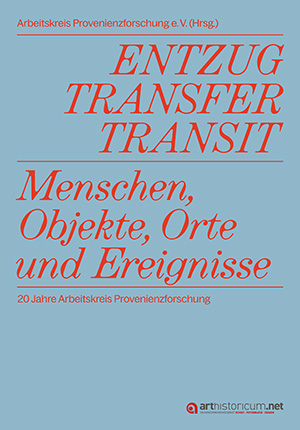Zitationsvorschlag
Lizenz (Kapitel)

Dieses Werk steht unter der Lizenz Creative Commons Namensnennung 4.0 International.
Identifier (Buch)
Veröffentlicht
Der Umgang mit Übersiedlungsgut jüdischer Emigrant*innen in Hamburg und Bremen nach 1939: Beteiligte, Netzwerke und »Verwertung«. Ein Zwischenstand
Dealing with household removal goods from Jewish emigrants in Hamburg and Bremen after 1939: participants, networks and »exploitation«. An interim report
Due to persecution based on National Socialist ideology, Jewish emigrationfrom the German Reich increased from 1933. In this process, householdeffects for removal, stored in lift vans and crates, were often shipped via theports of Hamburg and Bremen. As commercial shipping ceased with the outbreak of the war on 1 September 1939, these goods remained in storage at ports and shipping companies. In Bremen, there were 1,000 such consignments, and in Hamburg probably over 3,000. From 1940, the Geheime Staatspolizei (Gestapo) began to seize removal goods in both cities with the goal of »exploiting« the contents. The objects were consigned by bailiffs to auction houses and sold publicly to the highest bidder on behalf of the Finance authorities. Buyers and beneficiaries were not only private individuals but also dealers, museums, and libraries. Research on this subject is not only relevant for the northern German region. Owners of these household effects came from all over the Reich. In addition, the crates often contained artworks and cultural goods which were in turn widely resold beyond Hamburg and Bremen after the auctions. Two projects which work in tandem, both funded by the German Lost Art Foundation, investigate documents and files relating to the handling of removal goods in both cities. The material in question contains fragmentary, but overall valuable, information about these events, so that for example the mechanisms of abusive seizures can be understood. The aim is a detailed tracing of the paths taken by removal goods in order to establish a basis to allow finding and restituting lost objects. The information captured is bundled, structured and made accessible in the database »LostLift«. Users can, for example, search for owners, shippers, auctioneers, buyers, and objects.







